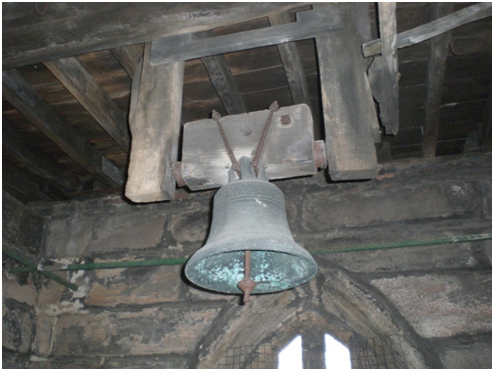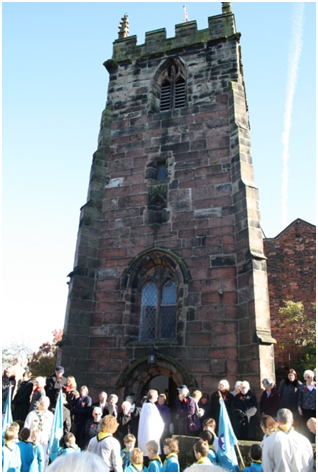Articles published in "The Villages Mag"
Contents
- David Elks
- Construction of The Viaduct
- Early Years of St Luke's Church
- Rudheath Sanctuary
- Henry Cotton
- Heavy Industry at Cranage?
- The Great Fire of 1753
- Armistice Day in Holmes Chapel
- The Bells of St Luke's Church
- Agnes Needham
- Dr Lionel Picton
- Morreys at Holmes Chapel
- Jodrell Bank Radio Telescope
- The Good Companions
- The Benger's Factory
The Bells of St Luke's Church Holmes Chapel
One of the pleasures of living in Holmes Chapel is hearing the bells of St Luke’s as they call worshippers to church and mark special occasions, both happy and sad. The bells have a long and interesting history.
There are seven in total, six of them dating back to the early years of the eighteenth century, though one was recast in 1858 and the original inscription replaced by the founder’s name: G. Mears of London. The seventh bell was cast by the same firm and bears the same date and inscription.

The smallest bell is dated 1706 and is known traditionally as the Dagtail or Draggletail Bell. It would be rung hourly between 6am and 6pm for the benefit of the workers in the fields, most of whom would not possess a watch. Its name derives from its other use of calling last minute stragglers to church services. The other five, and maybe the Draggletail too, were given to the church by Daniel Cotton (1660 – 1723), one of the family of ironmasters who owned Cranage Forge and other ironworks in the area. All the bells were inscribed with short phrases such as:
“I’le sally forth Queen Anns Great Worth. The gift of Daniel Cotton, Ironmaster, 1709.”

The religious and political disagreements which had led to the Glorious Revolution of 1688 had not diminished by the reign of Queen Anne (1702 – 1714). The French King Louis XIV sought to dominate Europe and restore the Catholic Stuarts to the English throne. Thus, with this quotation, Daniel Cotton was able to demonstrate his loyalty to the Crown and keep the villagers of Holmes Chapel informed of the great events of the time.
This article was published in "The Villages Mag" November 2018
